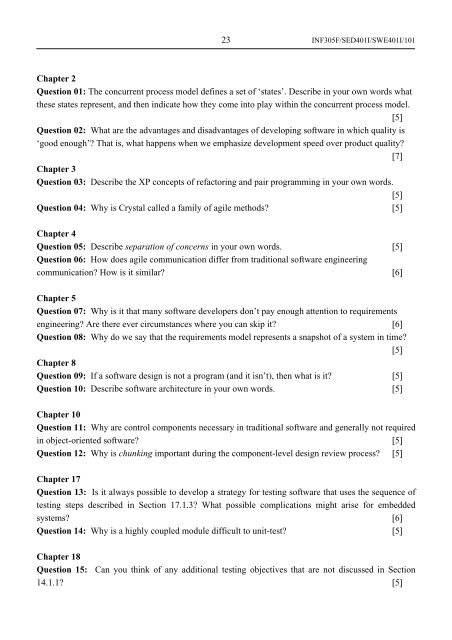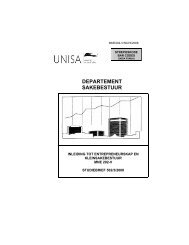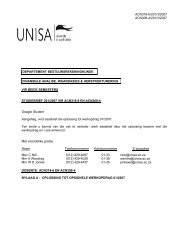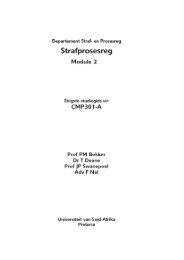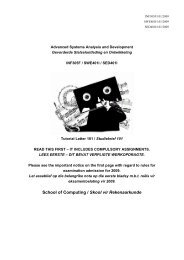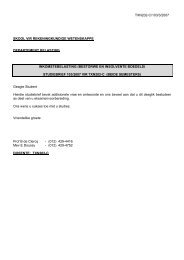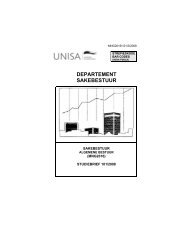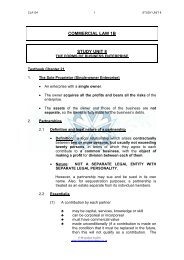Tutorial Letter 101 / Studiebrief 101 School of Computing ... - Name
Tutorial Letter 101 / Studiebrief 101 School of Computing ... - Name
Tutorial Letter 101 / Studiebrief 101 School of Computing ... - Name
Create successful ePaper yourself
Turn your PDF publications into a flip-book with our unique Google optimized e-Paper software.
23<br />
INF305F/SED401I/SWE401I/<strong>101</strong><br />
Chapter 2<br />
Question 01: The concurrent process model defines a set <strong>of</strong> ‘states’. Describe in your own words what<br />
these states represent,<br />
and then indicate how they come into play within the concurrent process model.<br />
[ 5]<br />
Question 02: What are the advantages and disadvantages <strong>of</strong> developing s<strong>of</strong>tware in which quality is<br />
‘good<br />
enough’? That is, what happens when we emphasize development speed over product quality?<br />
[7]<br />
Chapter 3<br />
Question<br />
03: Describe the XP concepts <strong>of</strong> refactoring and pair programming in your own words.<br />
[5]<br />
Question<br />
04: Why is Crystal called a family <strong>of</strong> agile methods? [5]<br />
Chapter 4<br />
Question<br />
05: Describe separation <strong>of</strong> concerns in your own words. [5]<br />
Question 06: How does agile communication differ from traditional s<strong>of</strong>tware engineering<br />
communication?<br />
How is it similar? [6]<br />
Chapter 5<br />
Question 07: Why is it that many s<strong>of</strong>tware developers don’t pay enough attention to requirements<br />
engineering?<br />
Are there ever circumstances where you can skip it? [6]<br />
Question 08: Why do we say that the requirements model represents a snapshot <strong>of</strong> a system in time?<br />
[5]<br />
Chapter 8<br />
]<br />
in your own words. [5]<br />
Question 09: If a s<strong>of</strong>tware design is not a program (and it isn’t), then what is it? [5<br />
Question<br />
10: Describe s<strong>of</strong>tware architecture<br />
Chapter 10<br />
Question 11: Why are control components necessary in traditiona<br />
in object-oriented s<strong>of</strong>tware?<br />
l s<strong>of</strong>tware and generally not required<br />
[5]<br />
Question 12: Why is chunking important during the component-level design review process? [5]<br />
Chapter 17<br />
Question 13: Is it always possible to develop a strategy for testing s<strong>of</strong>tware that uses the sequence <strong>of</strong><br />
testing steps described in Section 17.1.3? What possible complications might arise for embedded<br />
systems?<br />
Question 14: Why is a highly coupled module difficult to unit-test?<br />
Chapter 18<br />
Question 15: Can you think <strong>of</strong> any additional testing objectives that are not discussed in Section<br />
14.1.1?<br />
[5]<br />
[6]<br />
[5]


